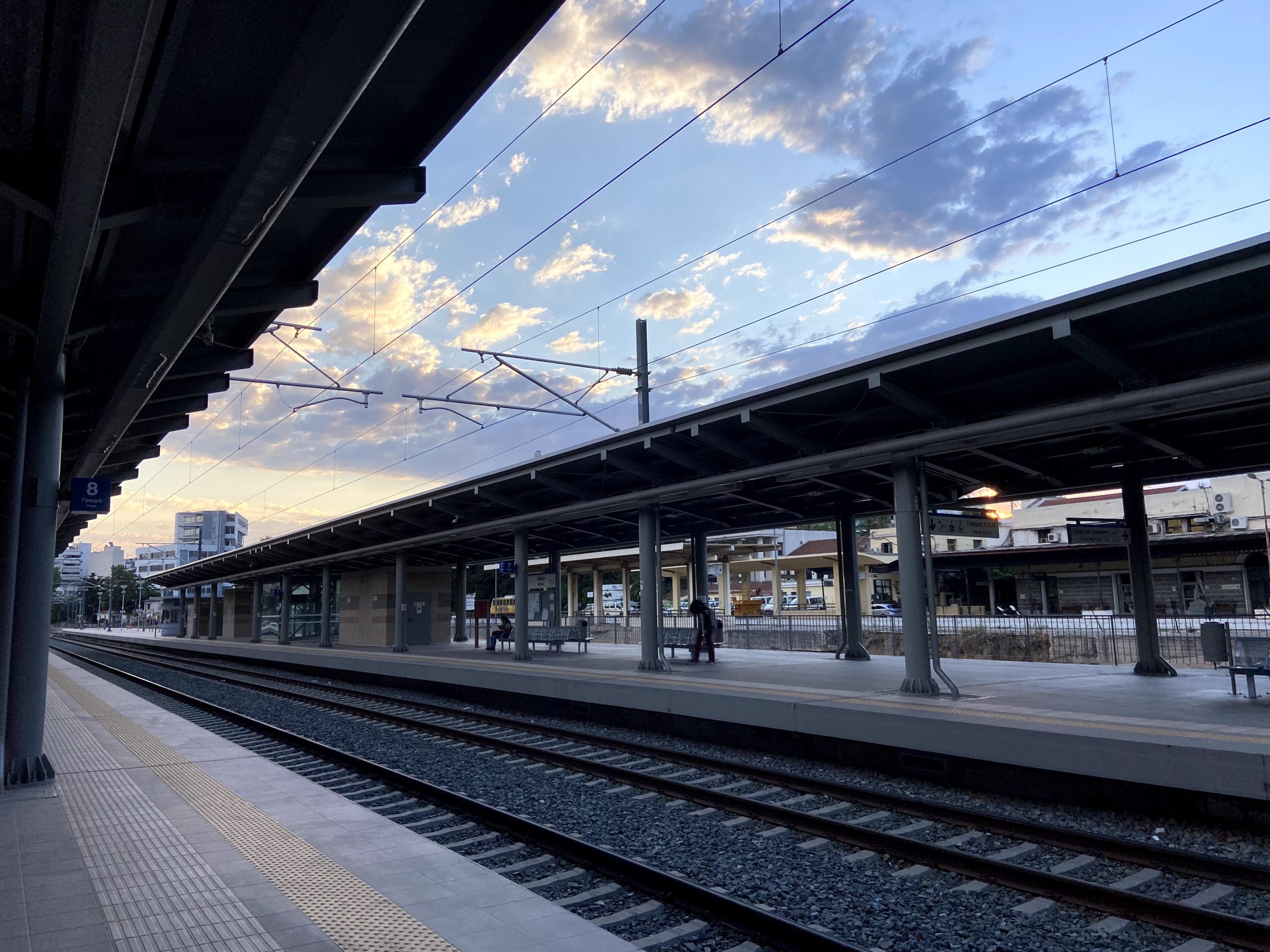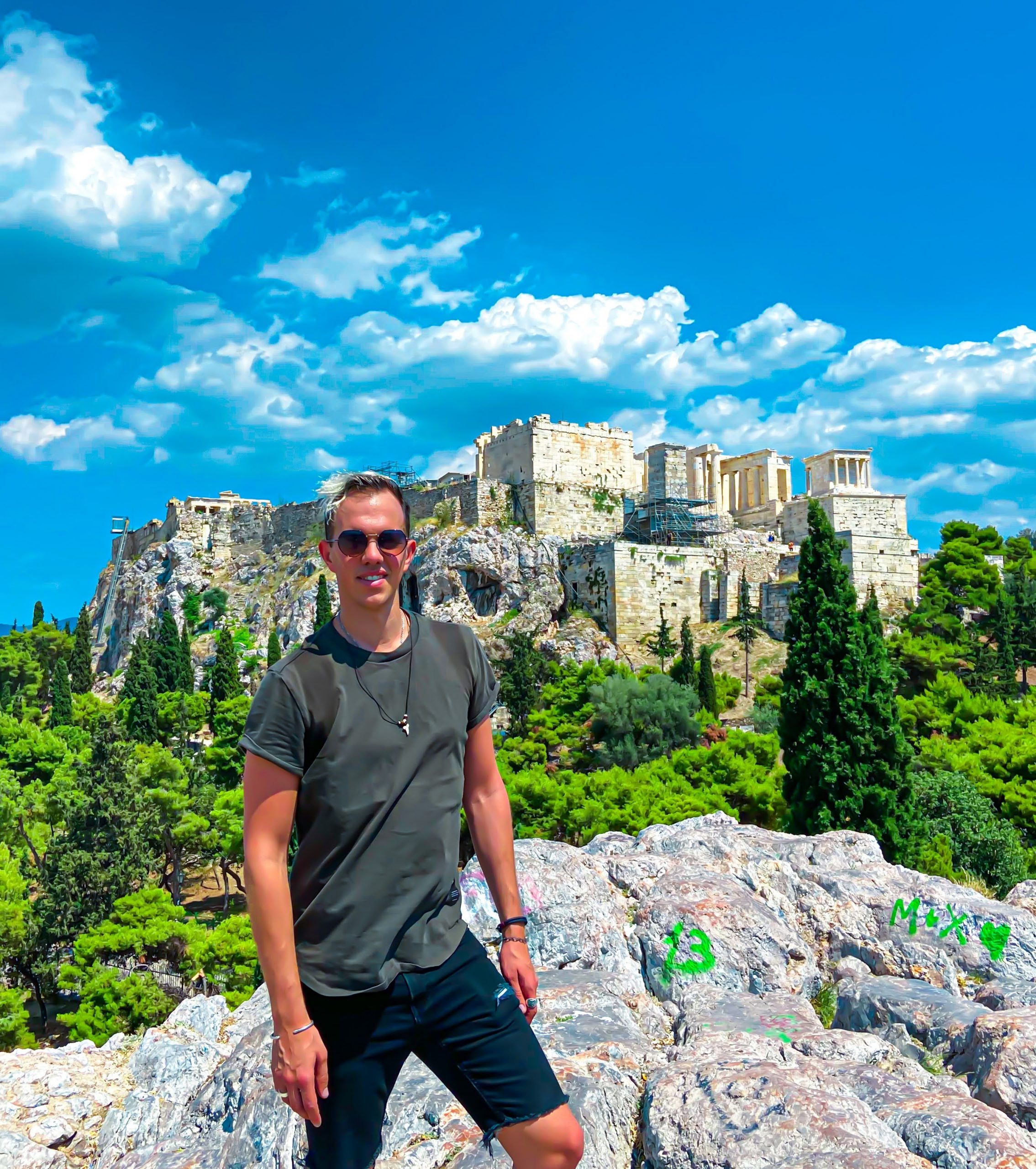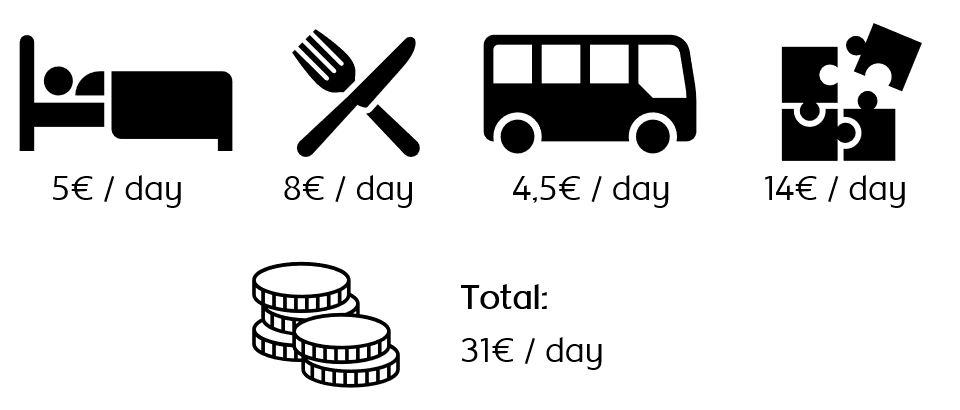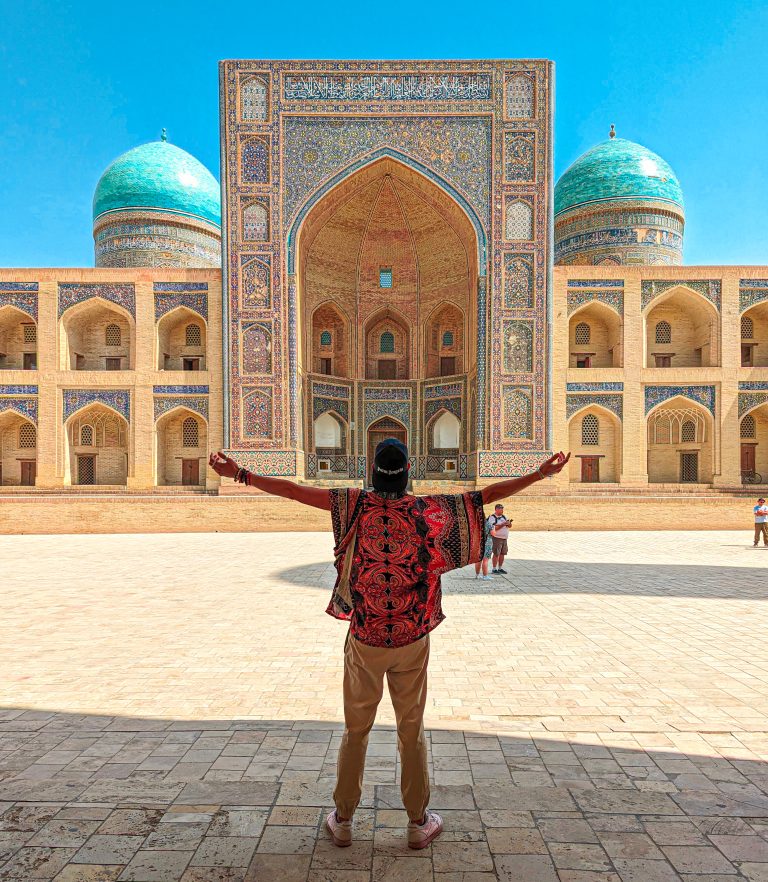Ultimate backpacking guide for Greece

Greece is perhaps the quintessential summer tourist destination. People from all over the world come to Athens to set sail for its coveted paradise islands. But there is life beyond the infinity pools of Oia in Santorini or the megayachts of Mykonos.
We are going to deny that traveling around the Greek islands requires a large budget and that it is a trip suitable for all budgets. Although not all of its islands, it is also an ideal place for those travelers who, like me, travel alone. On this route we will go to the northern mountains to discover the imposing Byzantine temples that hang from the mountains of Meteora, we will discover the history of Athens and we will explore its paradisiacal islands.
Everything you need to know for your trip to Greece:
- Best time of year to visit Greece
- Best tips for visiting Greece
- 9-day itinerary in Greece
- Daily budget for backpacking Greece
- Where to stay in Greece
- What to do in Greece if you have more time
Local currency euros (€)
Best time of year to visit Greece
Go looking for beaches or history, there are two clear times of the year to visit the Hellenic country.
- Summer, from June to September: Very high temperatures, ideal for those who want to enjoy the islands. The Greek islands are filled with tourists from all over the world, it is the best time to enjoy their climate although it is also the time when prices are highest and everything is more crowded.
- Spring and Autumn: Much more relaxed temperatures, ideal for touring mainland Greece. You can walk through the Akropolis, Delphi and the main Greek cities without constantly looking for shade. Another advantage is that the prices are usually lower.
Best tips for visiting Greece
- Improvisation Vs. no improvisation: If you like to travel improvising you will already know that in Europe the prices of hotels and flights change a lot according to the dates. Please note that all last minute reservations may cost you much more. Example: Ryanair Santorini to Mykonos € 15 a month before, two days before it can be close to € 70. In hostels you will not see so much variation.
- Solo travelers: Perhaps it is not the best destination to travel alone, although in hostels you always end up meeting people. It is a type of trip more focused on groups of friends and seeing people traveling alone is not so common outside of Athens. Although you will always end up meeting people if you find the right hostel.
- Move around the islands: Although public transport is really good and reaches everywhere it is usually very slow, infrequent and you have less autonomy to move around. On the islands I recommend you rent a scooter or an ATV for € 25 – € 35 a day.
9-day itinerary in Greece
Day 1: Meteora
Meteora is the great highlight that I take from this trip. I did not have high expectations about this place, it is quite far from Athens and getting there is not the most practical thing in the world to say.
My flight arrived at 3:30 am from there I took a bus to Syntagma (€ 5.50) and went to the Athens train station. It is a country with a somewhat precarious railway infrastructure and has a very modest train station, impossible to miss. You can buy the train ticket on the website of TrainOSE or at the same station. Round trip cost € 48. You have to go to Kalambaka and the direct journey usually takes about 4 and a half hours.

Once there you have three options: either you hire a tour, rent a vehicle or with the San Fernando car, half on foot, half walking. The route on foot is a total of about 21 kilometers, half a marathon, which is of Greek origin (all are coincidences). It can be done in about 5 – 6 hours perfectly.
Before embarking on the route, you should bear in mind that the monasteries have somewhat strange hours and close very early. You can check their official schedules in the following link. Although they are all worth it, it is not necessary to enter all of them. The ones they recommend the most are Vaarlam, Meteoron and Trinity and each of them costs € 3 and they only accept cash.
Once you get to Kalambaka, if you decide to walk (it is signposted) you will start to climb a path that will take you to the monastery of the Holy Trinity. It is a mountain path that will take you to the top in about 40 minutes. Of course, at 35ºC it is a bit more uphill than normal. Once there you will see the great monasteries built on top of the rocks.
Currently the entrances are enabled for visitors, but formerly these did not have stairs or entrances and the only access was through pulleys.








I continued visiting the rest of the temples until lunchtime although I did not enter all of them. Charalambos is the largest, but perhaps also the least spectacular (from the outside at least) and Rousanou, where I stopped for a sandwich in one of the best views of the whole trip.
After lunch I continued towards Meteoron and Varlaam, the only monastery that I ended up seeing from afar was Saint Nicholas, which is a bit off the main roads.
Day 2: Athens
After the previous day’s route and sleeping for about 12h, I took the first train to Athens.
Despite being a day of displacement, I had time to visit Athens for a few hours. I left my luggage in some lockers and was touring the center of Athens (just when it was hotter).
I couldn’t miss the Akropolis of Athens (€ 20) so that’s the first place I went to. The Akropolis of Athens is one of the most remarkable archaeological sites preserved to this day from ancient Greece. Located at the top of a hill you can see the Parthenon. The Parthenon is a temple dedicated to the goddess Athena.

In addition to the Parthenon, you will be able to see and visit the amphitheater, Athena temple, the Erechtheion and the doors of the Akropolis. Once the visit was over, I was walking and investigating the surroundings of the Akropolis without going into any specific place since I was returning to Athens the following weekend.
In the afternoon I took a last minute flight and flew to Santorini where the days of partying and relaxation would begin. If you fly to Santorini before 10:30 p.m. you can take a bus to Fira and from there get anywhere for € 1.60 instead of € 20 for a taxi. Just upon arriving at the hostel (highly recommended) I met a group of people and we went to discover the night of Fira.
Days 3 to 5: Santorini
They say that Santorini is the island of honeymoons and couples, that if you go alone or with friends you will not enjoy it. I personally liked it much more and would recommend it before Mykonos to anyone traveling alone.
Santorini is a volcanic caldera, that makes its beaches and its orography so unique and the terrain so rugged. The island suffered a devastating earthquake in 1956 that wiped out much of the island.
To discover the island, it is best to rent a quad (ATV) or a scooter, prices are usually fixed and range between € 25 and € 35 depending on the vehicle and the type of engine. You can find rental agencies anywhere on the island. I recommend that you go discovering its beaches and villages independently in your own vehicle or public transport. Although you can also hire a tour to go to one of the small islands in the center of the caldera.
The first day I spent to visit Red Beach in Akrotiri, it is a cove that is surrounded by a reddish stone mountain that gives it that name. In the afternoon I headed to another cove in the north of the island, it is called Ammoudi Beach, very secluded and quiet, ideal for those who like to do a little snorkeling or jump into the sea from somewhere high. In that same cove there is a small church located on a tiny island that you can reach by swimming (Nisis Agios Nikolaos).
The second day I dedicated myself to discovering other places of interest in the south of Santorini. I got to the Akrotiri lighthouse and later I went to rest at White Beach in Mesa Pigadia. I particularly liked this beach for some caves that have been formed in the same rocks as the beach, although the sea was somewhat dangerous and I did not get to go very far.









Other beaches that you should visit if you have time are Koloumpo and Perissa or Kamari, although the latter two are much larger and more popular.
But above all what you should not miss under any circumstances is the sunsets from Oia. Oia is the typical little magazine town that is on the side of the mountain, its white houses and churches with blue domes slide down the hill. All this adorned by the sun fading on the horizon and staining the sky red. It is one of the most magical sunsets I have ever seen. The sky is stained red due to suspended dust and sand that comes from Africa and the evaporation of water due to the high temperatures in the Cyclades region.
The two sunsets that I was in Santorini I went to Oia to enjoy it. The best place to enjoy it is in the castle area, although it gets crowded and can be a bit overwhelming. My sunset tip is that you jump a small green fence right at the top of the castle and you will find a super quiet place to enjoy this sunset.



Both before and after sunset, I recommend that you take a walk through Fira and Oia, its villages are charming and worth seeing both day and night.
Days 5 to 7: Mykonos
The third day in the Cyclades was one of transition, as I set off for Mykonos. There are several ferries during the day and because there is no direct air connection between Santorini and Mykonos. The simplest thing is to go by ferry, although from my point of view they are not cheap at all (around € 60 per person and it takes about 3 hours).
Once in Mykonos the plan is similar to Santorini beaches, coves and charming villages with sunsets (although none surpasses that of Oia). The relief of Mykonos is very different from that of Santorini, it is not a volcanic caldera and its beaches and seabed are more sandy and the water of the sea more turquoise and crystalline.




In Mykonos I dedicated myself to discovering the south of the island through the Paraga area and the city of Mykonos. The town of Mykonos has the same charm as Oia although it is equally or more crowded and somewhat overwhelming. Of course, the sunset from the famous Windmills of Mykonos does not concentrate as many people as Oia.
Days 8 to 9: Athens
After several days on the beach and islands, it was time to return to the mainland, since my plane was leaving from Athens. I got back on a ferry that took me to the port of Piraeus. Piraeus is one of the main cities adjoining Athens. From there you can take the metro to the city center and from there get anywhere.
Just upon arriving in Athens I met a group of people with whom we quickly made plans. We went to see the sunset from the Filipapo hill, where the best of all are the views of the Akropolis. As the day falls, the Parthenon and the rest of the buildings turn orange, and this is the best place to contemplate it.
We had dinner for Psyri in a typical Greek restaurant and we ended up having some Greek wines until the wee hours of the morning on the Aeropagus hill, with the Akropolis behind us and Athens at our feet.
The next day, not without a bit of a hangover, I put the historical monuments aside and went for a walk around the city to discover the controversial neighborhood of Exarcheia. Nothing to do with how it is painted on television and some youtubers looking for clicks on their videos. The neighborhood is totally safe, very painted all over and somewhat decadent, all within the preconception you may have of the anarchist neighborhood of Athens. Stroll through its streets, look at its banners, graffiti and somewhat abandoned parks, but at no time will you have the feeling of danger.




After returning to the hostel to eat and regain some strength, I continued exploring the historic center of Athens. The first stop was the Agora (€ 10). The Agora was the ancient center of Athens, in this same complex you can visit temples, churches (Byzantine) and ancient buildings from the Greek period that are preserved in perfect condition. Among them you should not miss the Stoa of Attalos, Sacred Church of the Apostles, the temple of Hephastheus among others.
Although I did not get to visit them if you have time and desire you can also go to Hadrian’s library, the Roman forum and Hadrian’s arch.
Daily budget for backpacking Greece
Although Greece is expensive in practically everything except food, you can manage a budget quite according to your needs. You can visit the most luxurious enclaves of Greece with a modest budget without being around anything (that does not include parties on yachts;) …).
Transportation is what surprised me the most, the train is quite expensive, and / v on a regional train to Meteora it cost about € 50. The inter-island ferry usually costs around € 60 for trips of about 3 hours if you don’t want to spend a whole day on a slow ferry in the middle of the sea. You also have to add the vehicle rental, if you go only about € 30 a day for an ATV no one takes it away from you.
Leisure is also another of the great expenses of the trip, since you are probably going to go out at night, in Fira and Athens it is very affordable and manageable although the prices of the drinks are European 8 – 10 € the glass and in Mykonos the tickets and Drinks to clubs are prohibitive.

Food and accommodation on the other hand is relatively affordable even if you don’t expect great luxuries. In mainland Greece for about € 15 you will have very good facilities in practically new hostels. While on the islands they will be camping-hostels or less new hostels around € 25 which, taking into account their locations, is not bad at all. On the other hand, in some hostels there will be kitchen and in others not, which will force you to eat out more times, although you can complement street food and restaurants perfectly to keep the budget.
You can take off the ATVs or travel on slower ferries and you can save about € 15-20 a day.
Where to stay in Greece
Practically all the places were a success in one way or another
- Meteora Central Hostel // Meteora: Super new hostel run by a lovely Greek couple, Gyorgios and Stella. The rooms are brand new and the bathrooms are very clean. Its high season is winter and spring because it is the best time of the year to visit Meteora.
- Fira Backpackers // Santorini (Fira): Although the staff weren’t the best, their volunteers were lovely. The location is unbeatable 5min walk from the center of Fira and 2min from the bus station. The dorms are simple and the hostel has a huge common area and pool to socialize with the rest of the backpackers.
- Paraga Beach Hostel // Mykonos (Paraga): Perhaps the best location I have had to date in a hostel, literally above the sea, with a pool and beach club. It must be clarified that it is a kind of camping with bungalows and not a hostel per se. Although Mykonos and this place in particular is not the best place for only travelers since people usually travel in large groups.
- Athens Backpackers // Athens: Unbeatable hostel in the foothills of the Akropolis of Athens, with a common area and bar to socialize with other travelers and meet fellow travelers. It is newly renovated, new clean and very safe.
For those who travel alone and improvising, I would recommend investing a couple of days in Athens to meet people, since it is a hub through which everyone passes to go to the islands or other places.
What to do in Greece if you have more time
The list of places could be endless, but I am going to give you some alternatives depending on what you are looking for.
- Islands: I would have liked to continue exploring the Cyclades, so with a little more time I would have gone to Ios, Paros or Naxos. In that same order.
- History: Delphi is definitely one of the places to consider, perhaps the second most notable archaeological site in Greece behind Athens.
- Nature and mountains: The Meteora area fell short of me, so if I returned I would continue to discover the Macedonian region in the north of the Hellenic country.


